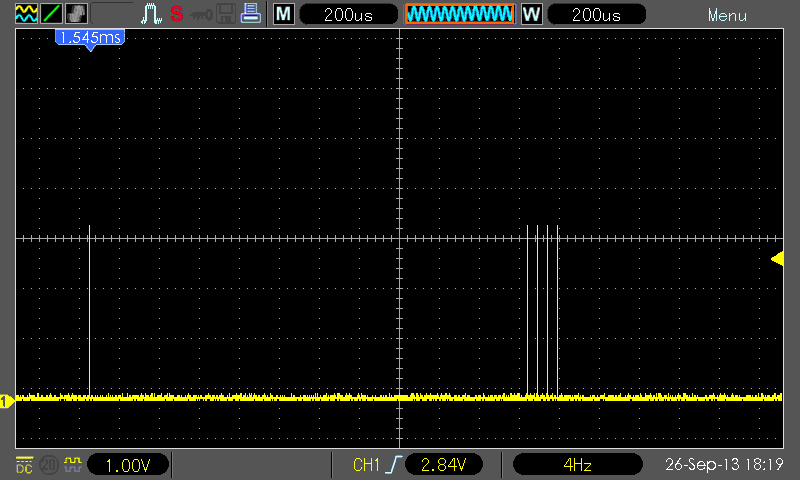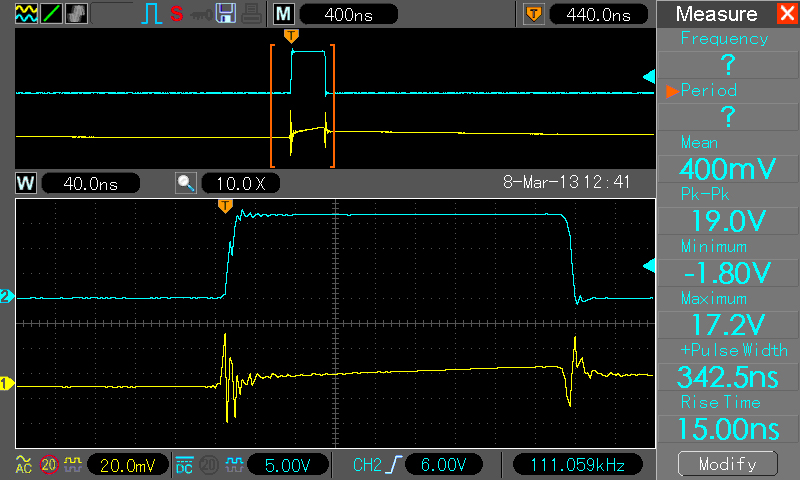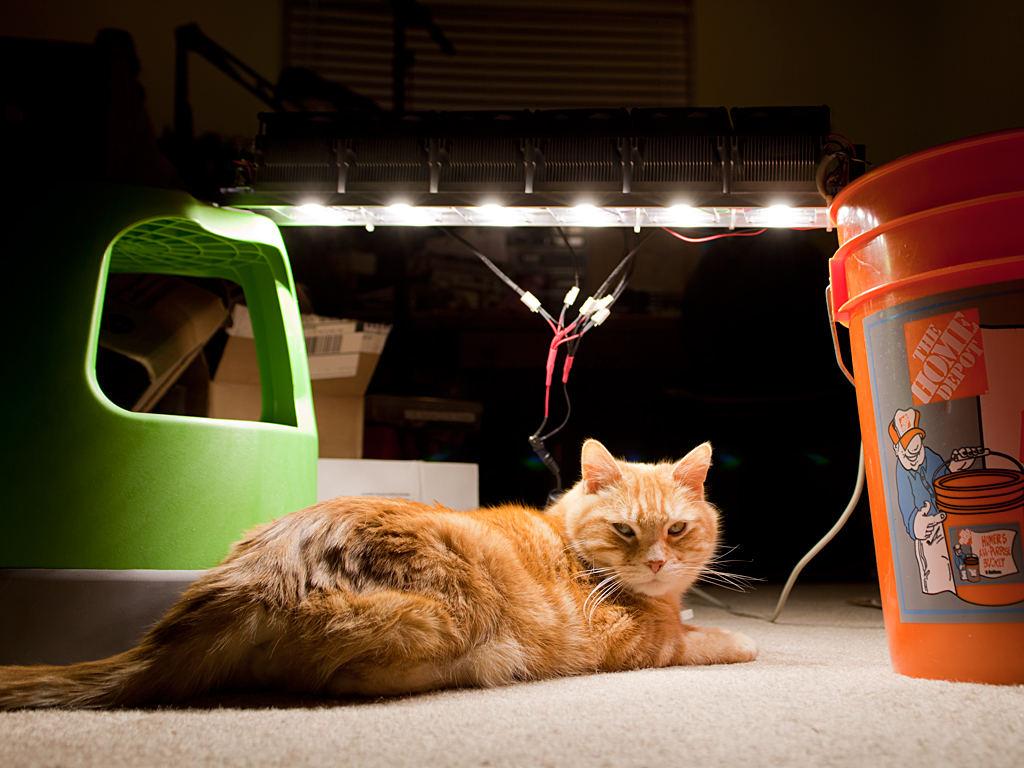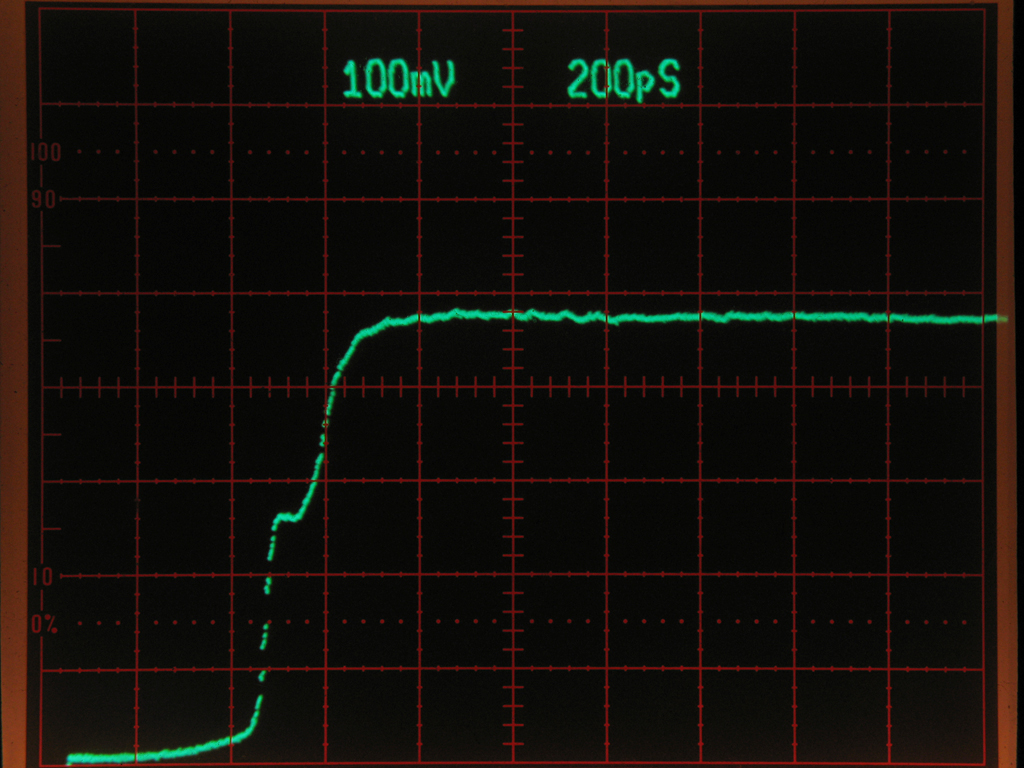 Traditionally, Toshiba HD44780-compatible alphanumeric LCD displays are driven by bit-banging bus signals combined with long delays between sending commands and data. In many cases, this method is good enough. However, there are situations where extra CPU cycles are not available, and a more efficient method of driving the display is needed. I’m currently working on a design involving very fast USB exchanges combined with occasional LCD output, and I’ve developed a solution that works very well for me. I’m sharing it in the hope that fellow developers will find it useful.
Traditionally, Toshiba HD44780-compatible alphanumeric LCD displays are driven by bit-banging bus signals combined with long delays between sending commands and data. In many cases, this method is good enough. However, there are situations where extra CPU cycles are not available, and a more efficient method of driving the display is needed. I’m currently working on a design involving very fast USB exchanges combined with occasional LCD output, and I’ve developed a solution that works very well for me. I’m sharing it in the hope that fellow developers will find it useful.
 This simple modification, originally described by tinhead on the EEVBlog forum, is intended to make the built-in cooling fan quieter. A common issue with cooling fans is the noise they produce, and a typical solution is to reduce the voltage (and therefore the current) supplied to the fan, causing it to spin more slowly. The Hantek DSO5000-series oscilloscopes feature a three-terminal 12V voltage regulator dedicated to the fan (indicated by an arrow in the title image). To adjust the fan voltage, I simply need to replace the regulator labeled U7 on the power supply PCB.
This simple modification, originally described by tinhead on the EEVBlog forum, is intended to make the built-in cooling fan quieter. A common issue with cooling fans is the noise they produce, and a typical solution is to reduce the voltage (and therefore the current) supplied to the fan, causing it to spin more slowly. The Hantek DSO5000-series oscilloscopes feature a three-terminal 12V voltage regulator dedicated to the fan (indicated by an arrow in the title image). To adjust the fan voltage, I simply need to replace the regulator labeled U7 on the power supply PCB.
 Some time ago, I realized that I needed to add a digital oscilloscope to my set of instruments. A DSO is handy for making measurements and capturing screenshots—something I've been doing a lot lately. After comparing the specifications of current models from several manufacturers, I chose the Hantek DSO5102B. The main reasons for selecting this model were its cost, screen size, and strong potential for hacking—though not necessarily in that order.
Some time ago, I realized that I needed to add a digital oscilloscope to my set of instruments. A DSO is handy for making measurements and capturing screenshots—something I've been doing a lot lately. After comparing the specifications of current models from several manufacturers, I chose the Hantek DSO5102B. The main reasons for selecting this model were its cost, screen size, and strong potential for hacking—though not necessarily in that order.
 To make my growing season preparations more high-tech, I built a grow light with more than 25,000 lumens of light output, spending less than US$300. Note: this article was written in 2013, and prices have risen since then.
To make my growing season preparations more high-tech, I built a grow light with more than 25,000 lumens of light output, spending less than US$300. Note: this article was written in 2013, and prices have risen since then.
 While making some measurements today, I noticed a strange reflection in the signal generated by my Tektronix 7S12 TDR sampling plugin. At first, it looked like a bad connection at the output of the loop-through S-6 sampling head. However, after further testing, it turned out to be a more serious flaw.
While making some measurements today, I noticed a strange reflection in the signal generated by my Tektronix 7S12 TDR sampling plugin. At first, it looked like a bad connection at the output of the loop-through S-6 sampling head. However, after further testing, it turned out to be a more serious flaw.
 Traditionally, Toshiba HD44780-compatible alphanumeric LCD displays are driven by bit-banging bus signals combined with long delays between sending commands and data. In many cases, this method is good enough. However, there are situations where extra CPU cycles are not available, and a more efficient method of driving the display is needed. I’m currently working on a design involving very fast USB exchanges combined with occasional LCD output, and I’ve developed a solution that works very well for me. I’m sharing it in the hope that fellow developers will find it useful.
Traditionally, Toshiba HD44780-compatible alphanumeric LCD displays are driven by bit-banging bus signals combined with long delays between sending commands and data. In many cases, this method is good enough. However, there are situations where extra CPU cycles are not available, and a more efficient method of driving the display is needed. I’m currently working on a design involving very fast USB exchanges combined with occasional LCD output, and I’ve developed a solution that works very well for me. I’m sharing it in the hope that fellow developers will find it useful.



